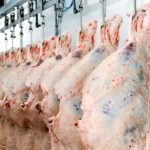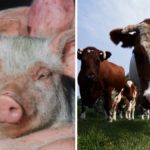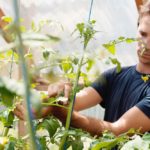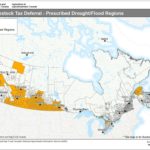Reading Time: 3 minutes I had given a century-old Stockman’s Manual to a young rancher as a gift. As we leafed through the pages, it was pretty evident how cattle, particularly British cattle, have changed over the years. Once mostly horned, short legged, deep in body, wide in loin and very haired up, they look very little like the […] Read more

Who has benefited from the shift to heavier cattle?
The move to larger animals began decades ago but was driven by packers, not consumers and ranchers

U.S. livestock: Futures rally on choppy grains, hopes for Chinese buying spree
Chicago | Reuters – Chicago Mercantile Exchange (CME) live hog futures rallied on Tuesday, as competition among packers for spot delivery grew and animal weights slipped after the recent U.S. heat wave, traders said. Live cattle futures also inched up, supported in part by choppy trading in U.S. grain futures and growing questions of whether […] Read more

Is there really any need to brand cattle anymore?
The reasons have largely disappeared
Reading Time: 4 minutes I hope everyone will seriously question if we need to brand — and if we do, how best to do it. I have heard several veterinarians and animal welfare scientists discuss if branding in its original form is even needed today. Lots has changed from the days of the wide-open range where cattle were mixed […] Read more

Agriculture foreign workers get new path to residency
Updated, July 15 — The federal government has announced a pilot program that will make it easier for farms and food companies to maintain workers they recruit from around the world. Ahmed Hussen, minister for immigration, refugees and citizenship, announced the program Friday at Maple Leaf Foods in Mississauga. Why it matters: There’s a labour […] Read more

Co-op Feeds to shut two Prairie plants, sell another
In the face of “industry challenges,” Federated Co-operatives’ livestock feed manufacturing division plans to pull its operations from six plants down into three. Saskatoon-based Federated Co-op announced Monday it will consolidate its production of bulk and bagged cattle, horse, sheep and poultry feed into three of its existing plants, at Calgary, Saskatoon and Moosomin, Sask. […] Read more

U.S. Midwest’s catastrophic floods cause widespread damage
Brownville, Neb. | Reuters — Severe flooding caused by rainfall and melting snow devastated farms and towns in Nebraska and Iowa on Tuesday, leaving at least four people dead and causing hundreds of millions of dollars in damage, with waters yet to crest in parts of the region for several days. The floods inundated stretches […] Read more

Livestock, pets among victims in U.S. Midwest flooding
Reuters — The floods that have devastated large swaths of Nebraska and Iowa since late last week left house pets homeless, inflicted an unknown toll on livestock and led to several daring water rescues of animals from dogs to horses. Rescuers in the Omaha area, where the Platte, Elkhorn and Missouri rivers began spilling over […] Read more

Livestock tax deferral map expands again for 2018
Some northern and southwestern Ontario producers who had to sell breeding livestock due to drought in the 2018 tax year can now defer chunks of the income from those sales when filing their income taxes. The federal government on Wednesday rolled out its final list and map of designated regions for 2018 under its livestock […] Read more

Unusual third assessment run for livestock tax deferrals
In an unusual move, Agriculture and Agri-Food Canada has undertaken a third assessment for the federal livestock tax deferral. “Federal officials are currently finalizing the analysis to identify whether any additional regions have met the criteria for the livestock tax deferral,” AAFC spokesperson James Watson said. Under the deferral plan, cattle producers affected by severe […] Read more

Beetles halt U.S. DDGs exports to Thailand
Chicago | Reuters — Exports of U.S. distillers’ dried grains to Thailand have stopped due to new fumigation requirements installed after beetles were discovered in a shipment last year, U.S. traders said on Friday. Thai government officials said U.S. shipments required certificates showing they had been “properly fumigated.” Traders said sales had effectively been halted […] Read more

